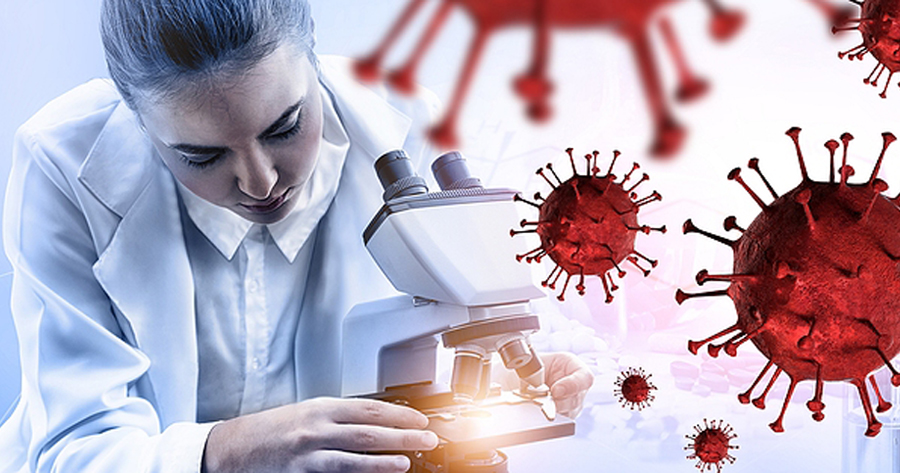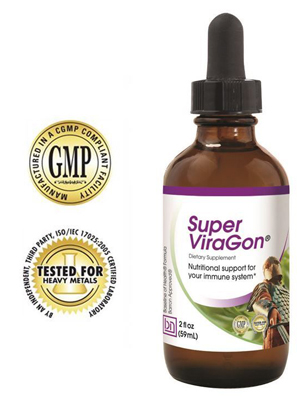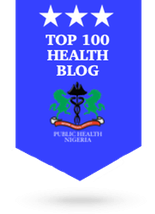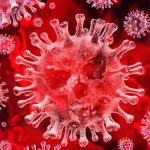I have to admit, I have little enthusiasm for writing this newsletter. Opinions have become so fixed that very few people are looking for new information. Most people now merely want to see things that confirm what they already believe and want nothing to do with anything that conflicts with that belief. For example, most people connected with the antivaxxer movement probably stopped reading this newsletter the moment they saw the word vaccine in the title.
Nevertheless, several hundred people have written in over the last couple of months asking when I was going to release a new newsletter updating them on the virus. And as the old marketing adage goes, for everyone who writes in, there are a hundred who feel the same but didn’t bother to write. So, if that’s true, out of the quarter of a million people who read these newsletters around the world, there are some 20-40 thousand who are actually still looking for rational, updated information about the coronavirus. And so, for those readers I have summoned up my reserves of enthusiasm to write this newsletter.
COVID-19 Vaccines
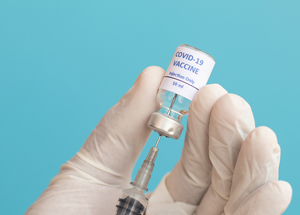 On November 9, Pfizer pharmaceutical and its collaborator BioNTech released early study results indicating that their vaccine candidate prevented more than 90% of infections from the COVID-19 virus. (On November 18, they revised that to 95% effective.) If all goes as expected, FDA approval will come right around the time this newsletter publishes in early December, with emergency distribution before the end of the month. Mass distribution, however, will not likely occur until sometime later in 2021. In a statement, Pfizer said it expects to deliver up to 50 million doses of its experimental coronavirus vaccine in 2020. That’s not quite as much as it sounds as two doses are required for each person. Up to 1.3 billion doses will be available in 2021, but that would be for the entire world. So, you’re still only talking about a half billion out of 7.6 billion people.
On November 9, Pfizer pharmaceutical and its collaborator BioNTech released early study results indicating that their vaccine candidate prevented more than 90% of infections from the COVID-19 virus. (On November 18, they revised that to 95% effective.) If all goes as expected, FDA approval will come right around the time this newsletter publishes in early December, with emergency distribution before the end of the month. Mass distribution, however, will not likely occur until sometime later in 2021. In a statement, Pfizer said it expects to deliver up to 50 million doses of its experimental coronavirus vaccine in 2020. That’s not quite as much as it sounds as two doses are required for each person. Up to 1.3 billion doses will be available in 2021, but that would be for the entire world. So, you’re still only talking about a half billion out of 7.6 billion people.
Exactly one week later, on November 16th, Moderna announced that its COVID-19 vaccine had proven 94.5% effective in testing. Specifically, there were 95 cases of infection among patients in the company’s 30,000-patient study. Only five of them occurred in patients who had received Moderna’s vaccine, and those five all experienced only mild symptoms. Effectively, you could claim the vaccine had a 100% success rate.
Now, to be clear, we have no data on groups that were not included in the study, including children, pregnant women, highly immunocompromised people, and the very elderly. We also don’t know if people previously sick with COVID-19 will be protected against reinfection. We can probably infer that all these groups will respond positively to the vaccines once they are released in the real world, but the reality, for now, is unclear. That said, let’s look at what we do know for sure.
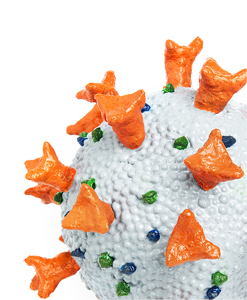 Most vaccines (the annual flu vaccine and most of the other COVID vaccines in the pipeline, for example) are designed around an entire neutralized virus (or multiple viruses as is the case with the flu vaccine). However, both the Moderna and Pfizer vaccine candidates use a new approach to unlock the body’s adaptive immune defenses. (For a complete description of the difference between innate and adaptive immunity, check out How a Virus Does Its Thing.) This approach uses messenger RNA, or mRNA, to turn a patient’s B-cells into factories that make antibodies that defend against one particular coronavirus protein. It’s a vaccine technology that’s so new, no mRNA vaccines have ever before been approved by the Food and Drug Administration. The difference between the two vaccines is that Moderna’s vaccine encodes for the entire spike (or S) protein on the surface of a virus, and the responses are said to be S-specific, whereas the Pfizer vaccine is more precise and encodes for only that part of the protein known as the binding domain, which is located on the spike. Incidentally, the spike is what a virus uses to attach to one of your cells, inject its DNA into your cell, and turn that cell into a factory that exponentially replicates and spreads the virus in throughout your body.
Most vaccines (the annual flu vaccine and most of the other COVID vaccines in the pipeline, for example) are designed around an entire neutralized virus (or multiple viruses as is the case with the flu vaccine). However, both the Moderna and Pfizer vaccine candidates use a new approach to unlock the body’s adaptive immune defenses. (For a complete description of the difference between innate and adaptive immunity, check out How a Virus Does Its Thing.) This approach uses messenger RNA, or mRNA, to turn a patient’s B-cells into factories that make antibodies that defend against one particular coronavirus protein. It’s a vaccine technology that’s so new, no mRNA vaccines have ever before been approved by the Food and Drug Administration. The difference between the two vaccines is that Moderna’s vaccine encodes for the entire spike (or S) protein on the surface of a virus, and the responses are said to be S-specific, whereas the Pfizer vaccine is more precise and encodes for only that part of the protein known as the binding domain, which is located on the spike. Incidentally, the spike is what a virus uses to attach to one of your cells, inject its DNA into your cell, and turn that cell into a factory that exponentially replicates and spreads the virus in throughout your body.
Both proteins can kick off an immune response as if there was a real coronavirus infection. One advantage to this approach is that since we’re talking about building the vaccine around only one virus protein or protein fragment as found in the spike, rather than the entire virus, there’s no way the vaccine can accidentally infect someone or make them sick with COVID-19. A second advantage, theoretically, is that the more proteins you’re dealing with, the more likely you are to have a negative side effect. With only one protein, the odds of a negative response, then, are less—and likely to be less intense if one occurs. In any case, whether it’s one protein or many, as long as the right protein or protein fragment is included, your body will build an antibody defense for it. Thus, if someone who was immunized gets exposed to the coronavirus later on, their body’s adaptive immune system should be able to fight it off more easily and be, therefore, more likely to avoid serious illness.
But in addition to programming your body’s B-Cells to build a specific antibody defense for the virus, you also want your immunization response to train your T-Cells to recognize and attack any of your own cells in your body that may have become infected by the virus and eliminate them as well before they can spread the virus. And in that regard, both the Pfizer and Moderna vaccines appear to do that as well, although the Pfizer vaccine initially appears to produce a slightly stronger response.
 On September 30th, Pfizer published a study in Nature that confirmed that two doses (the required dosage for their vaccine) elicited robust CD4+ and CD8+ T cell responses and strong antibody responses, with RBD-binding IgG concentrations clearly above those seen in serum from individuals who had been naturally infected by COVID-19 and then subsequently recovered from it.1 Sahin U, Muik A, Derhovanessian E, Vogler I, Kranz LM, Vormehr M, Baum A, Pascal K, Quandt J, Maurus D, Brachtendorf S, Lörks V, Sikorski J, Hilker R, Becker D, Eller AK, Grützner J, Boesler C, Rosenbaum C, Kühnle MC, Luxemburger U, Kemmer-Brück A, Langer D, Bexon M, Bolte S, Karikó K, Palanche T, Fischer B, Schultz A, Shi PY, Fontes-Garfias C, Perez JL, Swanson KA, Loschko J, Scully IL, Cutler M, Kalina W, Kyratsous CA, Cooper D, Dormitzer PR, Jansen KU, Türeci Ö. “COVID-19 vaccine BNT162b1 elicits human antibody and TH1 T cell responses.” Nature. 2020 Oct;586(7830):594-599. https://pubmed.ncbi.nlm.nih.gov/32998157/ In other words, the Pfizer vaccine appears to produce a stronger response than what is seen from those who acquire their immunity naturally.
On September 30th, Pfizer published a study in Nature that confirmed that two doses (the required dosage for their vaccine) elicited robust CD4+ and CD8+ T cell responses and strong antibody responses, with RBD-binding IgG concentrations clearly above those seen in serum from individuals who had been naturally infected by COVID-19 and then subsequently recovered from it.1 Sahin U, Muik A, Derhovanessian E, Vogler I, Kranz LM, Vormehr M, Baum A, Pascal K, Quandt J, Maurus D, Brachtendorf S, Lörks V, Sikorski J, Hilker R, Becker D, Eller AK, Grützner J, Boesler C, Rosenbaum C, Kühnle MC, Luxemburger U, Kemmer-Brück A, Langer D, Bexon M, Bolte S, Karikó K, Palanche T, Fischer B, Schultz A, Shi PY, Fontes-Garfias C, Perez JL, Swanson KA, Loschko J, Scully IL, Cutler M, Kalina W, Kyratsous CA, Cooper D, Dormitzer PR, Jansen KU, Türeci Ö. “COVID-19 vaccine BNT162b1 elicits human antibody and TH1 T cell responses.” Nature. 2020 Oct;586(7830):594-599. https://pubmed.ncbi.nlm.nih.gov/32998157/ In other words, the Pfizer vaccine appears to produce a stronger response than what is seen from those who acquire their immunity naturally.
What is more, these cellular responses were against the COVID-19 receptor-binding domain (the spike), implying a very precise response against the antigen for which the Pfizer vaccine encodes.
On November 12th, Moderna published a study in the New England Journal of Medicine (actually initially published online on July 14, 2020) that found that their vaccine induced an immune response in all participants, and no trial-limiting safety concerns were identified.2 Jackson LA, Anderson EJ, Rouphael NG, Roberts PC, Makhene M, Coler RN, McCullough MP, Chappell JD, Denison MR, Stevens LJ, Pruijssers AJ, McDermott A, Flach B, Doria-Rose NA, Corbett KS, Morabito KM, O’Dell S, Schmidt SD, Swanson PA 2nd, Padilla M, Mascola JR, Neuzil KM, Bennett H, Sun W, Peters E, Makowski M, Albert J, Cross K, Buchanan W, Pikaart-Tautges R, Ledgerwood JE, Graham BS, Beigel JH; mRNA-1273 Study Group. “An mRNA Vaccine against SARS-CoV-2 – Preliminary Report.” N Engl J Med. 2020 Nov 12;383(20):1920-1931. https://www.ncbi.nlm.nih.gov/pmc/articles/PMC7377258/ Specially, it found that the structurally defined spike antigen in their vaccine induces robust antibody neutralizing activity and that the gene-based delivery promotes Th1-cytokine-biased responses, including CD8 T cells that protect against virus replication in lung and nose cells without evidence of immunopathology. It also induces Th1-biased CD4 T-cell responses in humans.
A third advantage to the mRNA approach is that in addition to being more precise, vaccines made from mRNA can be made much faster than can older vaccines, which explains why these are the first two vaccines that will be made available. The major disadvantage, however, is that this type of vaccine is far less stable. That is, at normal temperatures, they can degrade very quickly. To nullify that effect, three steps are required.
- The first step is to modify the “building blocks” of the RNA vaccine so that it’s more stable—not so subject to degradation.
- The next step is to coat the building blocks to “protect” them from any enzymes that might degrade them.
- But the most important step is to freeze the vaccines to bring all enzyme activity to a standstill. And in that regard, the Pfizer vaccine requires much, much colder storage temperatures than the Moderna vaccine—so cold, in fact, that it requires special refrigeration units be built for its storage. In the developed world, this is difficult enough. In the third world, it’s simply not possible. Those countries will be dependent on the more traditional vaccines such as AztraZeneca’s or possibly the Russian vaccine.
And speaking of AstraZeneca, on November 23rd, AstraZeneca announced the results of preliminary trials of its vaccine. At full dosage, it proved 62% effective. But more interestingly, when a half dosage was used by accident on a number of test subjects, it demonstrated a 90% efficacy. Like the Moderna and Pfizer vaccines, AstraZeneca also requires two doses, but unlike the other vaccines, AstraZeneca’s vaccine does not require special refrigeration, which, as I just mentioned, makes it a much more viable alternative for third world countries where maintaining special storage temperatures are likely to be problematic. Additionally, the AstraZeneca vaccine is far cheaper to produce.
So, all is good; everything is moving forward; vaccines are here; we can see the light at the end of the tunnel; yes?
Not necessarily.
Safety
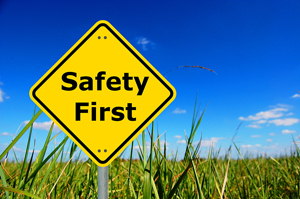 Although these vaccines look relatively safe, “relatively” is not the same as “perfectly”. As I said last February concerning the COVID-19 virus itself, a low percentage applied to a large number (everyone in the United States) would still mean a large number of people would die. Now, some 285,000 deaths and counting, that prediction seems quite prescient.
Although these vaccines look relatively safe, “relatively” is not the same as “perfectly”. As I said last February concerning the COVID-19 virus itself, a low percentage applied to a large number (everyone in the United States) would still mean a large number of people would die. Now, some 285,000 deaths and counting, that prediction seems quite prescient.
Let me show you how this works, using the flu vaccine as a real-world example.
Deaths and Injuries from the Flu Vaccine
The two most common causes of death from a flu shot are anaphylaxis and Guillain-Barre Syndrome (GBS). Anaphylaxis is a severe, potentially life-threatening allergic reaction to an antigen that can kill you by either suffocating you or causing a cardiovascular shock. Guillain-Barre Syndrome is a reaction of the central nervous system to bacterial or viral infection, most commonly food poisoning. It causes paralysis, usually temporary, and may result in a hospital stay of up to six weeks. Most cases of mortality from GBS are due to severe autonomic instability or from the complications of prolonged intubation and paralysis. The leading cause of death in elderly patients with GBS is arrhythmia.
The CDC reports 1.31 cases of anaphylaxis per million flu shots given and a comparable one or two people in a million will develop GBS. (About 161 million Americans get a flu shot each year.) So, we’re talking approximately 210 cases of anaphylaxis per year in the US, and since anaphylaxis has a fatality rate of between 0.25% and 0.33%, we’re talking about one death every two or three years. As for GBS, a small number of people are permanently impaired, and approximately 3% -5% die.
In other words, somewhere between 4-15 people die every year as a result of getting the flu vaccine, with maybe 300-400 suffering serious injury. Weighed against that is the fact that somewhere around 55,000 people die every year in the US from the flu itself, with most of those deaths occurring in the unvaccinated. Now, to be fair, although complications from flu vaccinations are rare given the number of flu vaccinations administered each year, if you or someone you love is the one who gets injured or dies, then rarity is probably not a mitigating factor in your mind. Incidentally, total compensation paid out over the life of the government’s National Vaccine Injury Compensation Program (NVICP) is about $3.6 billion. That’s a lot of serious side effects. And as I’ve discussed previously, the flu vaccine consistently tops the NVICP’s list of claims made and paid out for injuries and deaths resulting from the side effects of vaccination.3 “Vaccine Injury Table (Revised and Effective March 21, 2017.” National Vaccine Injury Compensation Program. (Accessed 2 Dec 2030.) http://www.hrsa.gov/sites/default/files/hrsa/vaccine-compensation/vaccine-injury-table.pdf
The bottom line is that the flu vaccine is neither as harmful or ineffective as antivaxxers claim nor as safe or effective as the medical community pronounces. Both sides have lied to you. Unfortunately, this makes any rational discussion about vaccines impossible.
What Do These Numbers Mean?
 We make these kinds of tradeoffs all the time. For example, every year in the United States there are some 39,000 deaths from car crashes—and many times that number who are injured—some permanently. And yet, we accept those deaths and injuries in exchange for the convenience of being able to drive ourselves around wherever and whenever we want. Likewise, we accept the fact that hundreds of thousands of people are going to die every year from heart disease as a result of allowing companies to manufacture and sell fast food and junk food simply because people want it. Again, it’s a tradeoff we are willing to make.
We make these kinds of tradeoffs all the time. For example, every year in the United States there are some 39,000 deaths from car crashes—and many times that number who are injured—some permanently. And yet, we accept those deaths and injuries in exchange for the convenience of being able to drive ourselves around wherever and whenever we want. Likewise, we accept the fact that hundreds of thousands of people are going to die every year from heart disease as a result of allowing companies to manufacture and sell fast food and junk food simply because people want it. Again, it’s a tradeoff we are willing to make.
The question is: are we willing to accept a few hundred people who may suffer long-term injury and a dozen or so people dying every year from COVID-19 vaccines (assuming the numbers end up similar to the flu vaccine) in exchange for preventing 500,000 deaths and “eventually” returning to normal life? At the moment, it seems that about 40% of the country thinks that’s a bad tradeoff.
In any case, at the moment, until the vaccine is used at much higher levels and we get to see if there are any long-term complications, the safety of these vaccines is an open-ended question.
What Are the Side Effects from the COVID Vaccinations?
But are the side effects associated with the COVID vaccines similar to those seen with the flu vaccine. In truth, they will probably be less for two reasons. One, since you’re only defending against one virus VS the several in each flu vaccine, the vaccine contains fewer antigen proteins. And having fewer antigen proteins likely means fewer harmful side effects. And theoretically, even though mRNA vaccines have never before been used in humans, they are likely to have fewer complications than traditional vaccines since they contain the fewest proteins of all—and they are very targeted at that. But again, given enough vaccinations, a small number of people are likely to experience much more injurious side effects, and a small percentage of them might even die. As with all vaccines, it’s a question of tradeoffs.
But let’s get granular and see what the studies have shown us about the known side effects from the COVID vaccines. All three vaccines we’ve talked about so far require two doses. Others in the pipeline require only one dose; their efficacy, however, has not been established. So, since the first three vaccines each require two doses, let’s talk about the side effects seen in those vaccines.
The process of vaccination literally involves teaching your immune system to recognize a virus and to defend against it quickly and aggressively, if and when it subsequently sees that virus for real. The first dose is where your immune system learns to recognize the virus. This is sometimes called ‘priming’ the immune response, and this process takes about two or three weeks. The second dose is where your immune system does the main work of building your long-term defenses against the virus and dramatically boosts that first immune response; that boosting process also takes about two weeks.
The actual injection feels no different than any other injection you may have had, which is basically just a little pinch in the side of your arm. From there, however, things get a little different. After the priming dose, you are likely to feel some pain and minor swelling around the injection site. And, according to test subjects, you are also likely to feel some stiffness in the upper arm that gets more intense as the day goes on. It’s nothing that isn’t easily managed and is pretty much gone by the next morning.
The second dose is where your immune system does most of its defense building, which means the side effects are going to be more intense. Test subjects reported that by the end of the day of the second injection they had developed a low-grade fever, fatigue, and even mild chills. But by the next morning, all side effects were gone.
Note: other vaccines in the pipeline will require only one dose. It is likely that those one dose vaccines will produce side effects similar to those experienced in the second shot of the two-shot vaccines. If the vaccine is working, those are the side effects that demonstrate that your immune system is responding to it. If you don’t get at least some of the side effects, then it’s likely your immune system is not optimally prepared to handle the virus if you are exposed to it in the future. It may still be enough–just not optimal.
Once you understand what’s happening in your body, this makes sense. No, you’re not getting a mild case of COVID. In fact, this is an impossibility with mRNA vaccines since there is no actual virus in the vaccine and is extremely unlikely even with more typical “inactivated virus” vaccines unless there is a major faux pas in manufacturing. Feeling “under the weather” simply means that your immune system is responding to the protein antigen/s presented in the vaccine. Take fever, for example. Any fever you experience when you get a cold or the flu is not actually caused by the virus itself. It is caused by your immune system as part of its defense against the virus. Raising your body temperature does three things.
- First, higher body temperatures are more uncomfortable for most pathogens than they are for us.
- Second, raising your body’s temperature speeds up your metabolism, which includes your immune system. In other words, raising your body temperature, throws your immune system into overdrive. Specifically, immune cells that grow in a fever environment produce a suite of molecules called heat shock proteins. One of these proteins, known as Hsp90, quickly sets in motion a cascade of events that eventually directs the immune cells to the site of infection at speed.4 Lin C, Zhang Y, Zhang K, Zheng Y, Lu L, Chang H, Yang H, Yang Y, Wan Y, Wang S, Yuan M, Yan Z, Zhang R, He Y, Ge G, Wu D, Chen J. “Fever Promotes T Lymphocyte Trafficking via a Thermal Sensory Pathway Involving Heat Shock Protein 90 and α4 Integrins.” Immunity. 2019 Jan 15;50(1):137-151.e6. https://www.ncbi.nlm.nih.gov/pmc/articles/PMC6432644/
- Swelling (accompanied by body ache unfortunately), also rushes more immune cells to the site of the inflammation.
Anyway, you get the idea. Having this kind of reaction to the second dose simply shows that your body is responding the way it should, that the vaccine is working, and that you are building long-term defenses against the virus.
As to any long-term side effects from the COVID vaccines, we will have to wait and see. Incidentally, long-term is when we will start to see the full extent of unexpected allergic reactions to the vaccines. The bottom line, though, when it comes to safety, is that getting your immunity through vaccination is probably a whole lot less risky than getting your immunity through natural infection (285,000 dead and counting, not to mention several million long haulers). Anyone who likes to gamble will understand where the better odds lie here.
Longevity
One big question that hasn’t been answered in any of the vaccine studies is: how long does the vaccine’s protection last? We know that naturally acquired immunity seems to start waning after 2-3 months in a time-dependent manner. A vaccine like the measles vaccine that lasts for life is one thing, but a vaccine that requires two separate inoculations and only protects for 6-12 months or less is a different story. It still may be useful, but it can no longer be considered a game changer. To be fair, most scientists are speculating that the COVID vaccines should maintain their efficacy for about a year. If so, then you’re talking about yearly inoculations for the foreseeable future.
On the other hand, through August, there had been at least 25 documented cases of reinfection worldwide since the start of the pandemic.5 “COVID-19 reinfection tracker.” BNO News. August 28, 2020. (Accessed 3 Dec 2020.) https://bnonews.com/index.php/2020/08/covid-19-reinfection-tracker/ The first known case of reinfection was a 21-year old South Korean woman on April 5th. And the first confirmed case of a person dying from a COVID-19 reinfection was an 89-year old Dutch woman who was being treated for Waldenström’s macroglobulinemia, a rare type of white blood cell cancer which is treatable but incurable. The findings were published in the Oxford University Press on October 9th.6 Marlies Mulder, Dewi S J M van der Vegt, Bas B Oude Munnink, Corine H GeurtsvanKessel, Jeroen van de Bovenkamp, Reina S Sikkema, Esther M G Jacobs, Marion P G Koopmans, Marjolijn C A Wegdam-Blans. “Reinfection of Severe Acute Respiratory Syndrome Coronavirus 2 in an Immunocompromised Patient: A Case Report.” Clinical Infectious Diseases, ciaa1538. https://doi.org/10.1093/cid/ciaa1538
The researchers said the woman arrived at the emergency department earlier this year while suffering from a fever and severe cough. She tested positive for coronavirus and remained hospitalized for 5 days, after which her symptoms subsided completely, except for persisting fatigue. Nearly 2 months later, just two days after starting a new round of chemotherapy, she developed a fever, cough, and labored breathing. When she was admitted to the hospital, her oxygen saturation was 90 percent with a respiratory rate of 40 breaths per minute. She again tested positive for coronavirus while tests for antibodies were negative at days 4 and 6. “At day 8, the condition of the patient deteriorated. She died two weeks later.”
But the truth is that it’s unclear how many cases of reinfection there have actually been and how common it may be among people who don’t even know they’re infected—either initially, or upon reinfection. The important point to understand here, though is that respiratory infections like COVID-19 don’t provide lifelong immunity like a measles infection—and neither will the vaccines.
Vaccines Work Better If People Actually Take Them
 The big question lurking in the background concerning the COVID vaccines is: how many people will take them? At the moment, about 50% of people surveyed indicate that they are not inclined to get the vaccine. The other day, I heard Chris Cuomo say that he was not concerned about people refusing to get vaccinated. He was sure that the reason people were hesitant was that the vaccines were produced so quickly that people doubted their safety and that as soon as the scientific community reassured them, they would line up to get the vaccine. He’s obviously looking at a different world than I am. When I look out at America, I see only about 10% of the population falling under his analysis. When I look at the numbers, I see 40% as hardcore naysayers.
The big question lurking in the background concerning the COVID vaccines is: how many people will take them? At the moment, about 50% of people surveyed indicate that they are not inclined to get the vaccine. The other day, I heard Chris Cuomo say that he was not concerned about people refusing to get vaccinated. He was sure that the reason people were hesitant was that the vaccines were produced so quickly that people doubted their safety and that as soon as the scientific community reassured them, they would line up to get the vaccine. He’s obviously looking at a different world than I am. When I look out at America, I see only about 10% of the population falling under his analysis. When I look at the numbers, I see 40% as hardcore naysayers.
There are three primary reasons the hardcore naysayers offer for not wanting to get vaccinated depending on which video they saw that dissuaded them.
- There are the long time antivaxxers. It’s not the COVID vaccine they object to specifically; it’s all vaccines. For the hardcore antivaxxers, vaccination doesn’t work at all, and it’s far more dangerous and deadly than the numbers cited above. And no amount of reassurance from the medical community will convince them otherwise when it comes to the COVID vaccines. In fact, to take the COVID vaccine would require a refutation of all they believe in. Not ‘gonna’ happen.
- Then there are those who have been convinced that COVID-19 is a hoax, that the number of deaths cited by the talking heads on TV is vastly exaggerated. When you consider that some of these people have denied having COVID-19 with their last dying breath even as they were actually dying from the virus, and others, who when they were diagnosed with COVID, spit on the doctors and nurses who diagnosed them, and walked out of the hospital to die at home, you would have to say that they are unlikely to get vaccinated. Not ‘gonna’ happen.
- And finally, there are those who have accepted as reality any of several theories making their way through the internet. For example: that the vaccine will be used as a method of population control or that the vaccine is being used by Bill Gates to embed tracking chips in every person in the world. Let me be clear. I am not here to argue the truth or falsehood of these narratives, only to suggest that someone who is convinced that COVID-19 is not real as part of that narrative is not going to change their mind just because some authority figure on TV says so. Not ‘gonna’ happen.
The why doesn’t matter though. If 40% of the public refuses to get vaccinated, vaccines, no matter how effective they might be, are not the “light at the end of the tunnel.” They are more like a low-powered flashlight to help us keep moving forward in a totally dark tunnel. The reason is simple.
Yes, all those who get vaccinated are likely to be protected. But 40% of the American public represents about 128 million people. And if 128 million people are still susceptible to the virus–and you can’t tell who there are by simply looking at them–it means that we’re still facing, for the foreseeable future:
- Mask requirements
- Social distancing
- Occasional local lockdowns
- And all indoor activities proceeding under modified circumstances.
You simply can’t fully open restaurants, bars, gyms, sporting events, and the like with 128 million potential virus carriers and infection points walking about incognito. And remember, even those who have been vaccinated will silently lose their protection, at any point in time, and with no easy way to know when that had happened.
All this is to say, if there is widespread resistance to vaccination, normal might be a good 2-3 years away.
By the way, unless there is some kind of official certification to identify those who have been vaccinated, any return to normal will be many months in the future. I mention this because in the rush to get as many people vaccinated as quickly as possible, I haven’t heard anything from the Federal government about vaccination certification. And it needs to be official and Federal or people will simply make and distribute fake certificates on the internet. Can you say, “Freedom to Breathe Agency?”
Looking Forward
 Before giving you my prediction on how this is going to play out, I need to address two issues that have come up from people writing into the Foundation.
Before giving you my prediction on how this is going to play out, I need to address two issues that have come up from people writing into the Foundation.
First, some people have claimed that my even saying that there is a virus and that it is killing lots of people means that I am unknowingly a puppet of the Deep State—and that I am citing fake numbers. To them, I would like to point out that I accurately predicted how COVID-19 would play out back in February, before there was even one recognized COVID death in the United States and weeks before the CDC acknowledged that the threat was real. Given that, I guess you could more accurately say that the Deep State was my puppet since they started citing my numbers.
Just kidding, but it does lead to the second issue.
Many people have written in to ask how I was able to predict so accurately months in advance how the virus was going to play out? They wondered if I had access to some different or secret data. And the answer to that question is: nope! I have access to the same data as most of the pundits. (Note: government officials have access to intelligence reports long before the general public, and you would think that they would be better informed. Unfortunately, it turns out that having access and understanding it are two different things.)
So, given the same data, how do I predict the actual outcomes weeks, or even months, ahead of most of the experts on TV. As I have explained before, I am neither an epidemiologist nor a virologist. What I am, when it comes to pandemics, is an extremely knowledgeable amateur. I have been studying how pathogens infect and how the immune system responds for over 50 years. I have also studied the history of pandemics, so I understand how the theoretical plays out in the real world. Also, for the last 20 years, I’ve been reading all the news reports about Bird flu, SARS, Swine flu, and of course COVID-19 coming out of South Korea, Taiwan, and China. They have much more experience with this sort of thing than we do in the West–not to mention the fact that they usually see it before we do. And finally, and perhaps most important of all, I am a student of human nature, as well as how that nature plays out when it comes to health and nutrition in different countries, cultures, and political systems. In other words, when I listen to the pundits on TV saying “If every American just starts wearing masks and keeping socially distant, it will save tens of thousands of lives,” I find myself thinking, “That’s not happening.” It’s simply not in the American psyche. It wasn’t back in 1918, and it’s certainly not now.
Which brings us to the question at hand: what can we look forward to?
Most people are going to opt for vaccination. And if you count those people, along with those who have already had the virus and thus have some immunity, it means that by next fall, things will be better–at least of those people. But as I have been saying for months now, small percentages applied to a large number is still a large number. In other words, if 40% of the American public is unwilling to consider the needs of the many over the needs of the few, we’re talking about a very large number that will remain vulnerable to the virus.
A couple of months ago, I saw a woman on TV explaining why she refused to wear a mask. With great pride, she said, “It’s my body, my choice.” Very pithy! And if her choice only affected her body, it would make sense. But in fact, it’s a bit like Jeffrey Dahmer saying, “It’s my body, my choice” vis-à-vis his diet. I’m thinking that most people would agree that since his choice of diet called for him to kill others and eat them, he probably shouldn’t have been allowed to make that choice.
Anyway, since the Federal Government has refused to lead and since so many state Governments have opted to follow suit and since so many individuals have opted for the Dahmer alternative (no masks, no social distancing, and no vaccination), the numbers are worse than they needed to be. We’re looking at:
- Over 300 thousand dead by year end
- 400-500 thousand dead (or even more if the Thanksgiving, Christmas, and New Year’s surges are higher than expected) by March 1st
- 4-10 million “long haulers” with severe symptoms lingering for months or years by March 1st
- Long COVID seems to be most common in those of working age, with a median age of 45 among those afflicted, and cases rare in those above the age of 65 and below the age of 18. Women are more likely than men to be affected. Long haulers have reported breathlessness, chronic fatigue, and brain fog…months after initially falling ill with the virus.
- And next fall and winter will be better but nowhere near back to normal. After that, however, I’m guessing that enough vaccine resisters will relent so that herd immunity will be established despite the remaining resisters. After that things will be more normal.
- That said, you need to remember that we’re talking about a pandemic, not an epidemic. It’s worldwide. That means there are likely to be pockets around the world where medical treatment and vaccination are viewed with suspicion, which means the virus will be lurking for years to come–just waiting to reemerge in any areas were immunity drops. That means that annual mass vaccination for COVID will be a likely reality for at least several years to come..
And yes, I understand that there are many people who have “seen the video” who think that COVID is a hoax and the numbers of dead are wildly inflated, but the deaths are real—and most likely undercounted. According to research published in JAMA, just counting from March through July, there had been 20% more deaths (225,530) than would normally be expected from March 1 through the end of July in the United States. COVID-19 officially accounted for about two-thirds of them. Increases in deaths from heart disease and Alzheimer’s accounted for most of the rest. The bottom line is that if those excess deaths aren’t due to COVID, and if heart disease and cancer and suicides and Alzheimer’s are already factored in, then we have an even bigger problem than COVID. It would mean that over a half million people will be dying in the 12 months since COVID arrived but from some unknown cause. I think Occam’s razor applies here: COVID is the simpler explanation.
Protecting Indoor Environments
 As we’ve just discussed, whatever “light at the end of the tunnel” pundits are talking about, it doesn’t include the full reopening of indoor venues such as restaurants and theaters anytime soon. Social distancing, plastic partitions, and partial occupancy are simply not economically viable alternatives for these types of venues. If we don’t find a way for them to open “normally” in the near future, many of these establishments will be out of business by the time herd immunity is realized, even with the coming of vaccines.
As we’ve just discussed, whatever “light at the end of the tunnel” pundits are talking about, it doesn’t include the full reopening of indoor venues such as restaurants and theaters anytime soon. Social distancing, plastic partitions, and partial occupancy are simply not economically viable alternatives for these types of venues. If we don’t find a way for them to open “normally” in the near future, many of these establishments will be out of business by the time herd immunity is realized, even with the coming of vaccines.
The only alternative is for indoor venues to take steps to kill the virus in the air and prevent its spread from person to person. And as I explained in August, there is a way to do that.
For example, there are studies that show that air ionizers can kill airborne viruses.7 Hagbom M, Nordgren J, Nybom R, Hedlund KO, Wigzell H, Svensson L. “Ionizing air affects influenza virus infectivity and prevents airborne-transmission.” Sci Rep. 2015;5:11431. Published 2015 Jun 23. https://www.ncbi.nlm.nih.gov/pmc/articles/PMC4477231/ The problem is producing enough negative ions economically to sanitize an entire restaurant or store, but it can be done.8 Plasma Air. “Plasma Air Ionization Proven to Reduce Coronavirus Surrogate MS2 Bacteriophage by 99% in Independent Spanish Testing.” PR NewsWire. Jun 16, 2020. (Accessed 2 Dec 2020.) https://www.prnewswire.com/news-releases/plasma-air-ionization-proven-to-reduce-coronavirus-surrogate-ms2-bacteriophage-by-99-in-independent-spanish-testing-301076955.html And other studies have shown that far-UVC light can kill airborne coronavirus, and those can be placed at the heart of HVAC units.9 Buonanno, M., Welch, D., Shuryak, I. et al. “Far-UVC light (222 nm) efficiently and safely inactivates airborne human coronaviruses.” Sci Rep 10, 10285 (2020). https://doi.org/10.1038/s41598-020-67211-2 Bottom line: there are ways to make the air and surfaces in indoor environments anathema to coronavirus transmission–without the need for masks.
But for that to become a reality, two things must happen.
- Business cannot take the lead here. Any system they install has to be pre-vetted by the Federal Government so that businesses know that installing such a system guarantees them the right to fully open.
- Doing this for all indoor businesses will be extremely expensive. Much of the cost will have to be borne by government. But keep in mind that restaurants, movie theaters, and live theater throughout the country represent billions of dollars in business and tax revenues and hundreds of thousands of jobs.
Government did an Operation Warp Speed to produce vaccines in record time; they can do the same to produce certified virus killing technology for indoor venues. And the good news is that this technology will do much to stop the spread of colds and flus each year as well as stopping the spread of COVID, saving additional billions of dollars. And unlike the COVID vaccine, which is targeted exclusively at COVID-19, the right kind of air killing system will provide a pre-installed defense against any future infectious respiratory disease that will inevitably emerge down the road.
A Note on Super ViraGon®
Not surprisingly, Baseline Nutritionals’ Super ViraGon sold extraordinarily well when the pandemic first broke In March. Theyliterally sold out months and months of inventory in a matter of days, with orders coming from all over the world, sometimes for as many as 300 bottles at a time. It caught them by surprise. As a result, I convinced Baseline to restock with thousands of bottles since I projected that the pandemic would last past the end of the year with a surge in the fall, which is exactly what it has done. Bottom line is that there should be plenty of stock to cover all the needs of Baseline’s regular customers going forward—except for two things.
- I just learned that Wellness Magazine is planning to release a feature story on Super ViraGon that could lead to an unexpected rush on the product similar to what happened in March. If so, it could quickly wipe out Baseline’s inventory.
- Thanks to COVID, delays in manufacturing now mean that the lead time for producing new batches of Super ViraGon are approaching six months. Bottom line is that if the Wellness Magazine article cleans out the inventory, it will be months before ViraGon is once again available.
For those of you who depend on Super ViraGon, it’s something to think about. Also, if you’re not planning to get vaccinated, then you absolutely want a case of Super ViraGon in reserve for each person in your family as a backup plan.
And finally, I convinced Baseline to reduce the price of the Super ViraGon® 6-pack by 10%. That means that if you buy two 6-packs in December (or one 6-pack combined with other products to reach $250), you’ll get 32% off when combined with the December special. If you’re going to stock up, now’s the time.
Addendum
As expected, we have received a large number of emails at the Foundation in response to this newsletter. Most have been positive, but some have not. I have been told in no uncertain terms that the virus is a hoax and that vaccines don’t work. We also received one email that told me categorically that the vaccines are made from alien DNA—and we’re not talking about the kind of aliens that come from other countries. That said, we did receive several emails from people who were concerned about one issue as presented in an online video making the rounds now that actually has some basis in reality: that vaccines are made from fetal tissue. Let’s explore that.
Background
For pro-life people around the world, one of the big questions is whether or not the vaccine is ethical in terms of how it was made and whether cells from aborted babies were used. And yes, it is true that traditional vaccines use dead or altered viruses in both their development and manufacturing, and these viruses have to be grown in cell lines–and some of those cell lines originated with aborted fetal cell lines (or as the video likes to dramatically phrase it, “aborted fetal tissue fragments.” (Other cell lines used came from tumor cells.) But the truth is a bit more nuanced than that.
So, Which Vaccines Are “Ethically Uncontroversial?”
The cell lines in question originated from embryonic kidney tissue sourced from a handful of abortions performed in the 60’s, 70’s, and 80’s. However, it is important to understand that the abortions themselves took place decades ago. The harvested cells from those abortions were then regenerated in laboratories multiple times over the next 30-50 years. These cell lines are technically “immortal,” because technicians can sustain them in a laboratory indefinitely under the proper conditions. Effectively, we are now dozens of cell generations removed from those original aborted cells. Even more important, though, is the fact that the vaccines themselves do not contain any of this cellular material. The viral molecules grown in these cells are both chemically and physically separated from the cells in which they were incubated. No fetal tissue makes its way into the final product. The vaccines themselves contain no fetal tissue fragments. (There is a small chance, however, that some DNA from those cells may make its way into the vaccine.)
Which brings us to the first three vaccines coming down the COVID pipeline: Pfizer, Moderna, and AstraZeneca.
- As discussed above, both the Pfizer and Moderna vaccines use synthetic genetic coronavirus material, called messenger RNA or mRNA. The production of mRNA vaccines does not use cells at all. The vaccines are developed using genetic sequencing on computers instead of being made with fetal cells. That said, although these vaccines use no fetal material in their production, they possibly have a more distant connection to fetal tissue. There is some evidence that the researchers involved in creating these vaccines may have made use of the referenced fetal cells in the early stages of vaccine design. But again, those cell lines have no connection with the actual generation/production of the actual vaccines.
- The AstraZeneca vaccine, on the other hand, is indeed produced by growing a modified virus in cells originally derived from embryonic kidney tissue sourced from the abortion performed in the 1970s. But again, the vaccine itself does not “contain” this cellular material. For purists, however, the connection to the fetal cell lines may be too close for comfort.
- Fortunately, the Pfizer and Moderna vaccines are probably acceptable to most people. And in fact, the pro-life Charlotte Lozier Institute lists the vaccines as “ethically uncontroversial.”
References
| ↑1 | Sahin U, Muik A, Derhovanessian E, Vogler I, Kranz LM, Vormehr M, Baum A, Pascal K, Quandt J, Maurus D, Brachtendorf S, Lörks V, Sikorski J, Hilker R, Becker D, Eller AK, Grützner J, Boesler C, Rosenbaum C, Kühnle MC, Luxemburger U, Kemmer-Brück A, Langer D, Bexon M, Bolte S, Karikó K, Palanche T, Fischer B, Schultz A, Shi PY, Fontes-Garfias C, Perez JL, Swanson KA, Loschko J, Scully IL, Cutler M, Kalina W, Kyratsous CA, Cooper D, Dormitzer PR, Jansen KU, Türeci Ö. “COVID-19 vaccine BNT162b1 elicits human antibody and TH1 T cell responses.” Nature. 2020 Oct;586(7830):594-599. https://pubmed.ncbi.nlm.nih.gov/32998157/ |
|---|---|
| ↑2 | Jackson LA, Anderson EJ, Rouphael NG, Roberts PC, Makhene M, Coler RN, McCullough MP, Chappell JD, Denison MR, Stevens LJ, Pruijssers AJ, McDermott A, Flach B, Doria-Rose NA, Corbett KS, Morabito KM, O’Dell S, Schmidt SD, Swanson PA 2nd, Padilla M, Mascola JR, Neuzil KM, Bennett H, Sun W, Peters E, Makowski M, Albert J, Cross K, Buchanan W, Pikaart-Tautges R, Ledgerwood JE, Graham BS, Beigel JH; mRNA-1273 Study Group. “An mRNA Vaccine against SARS-CoV-2 – Preliminary Report.” N Engl J Med. 2020 Nov 12;383(20):1920-1931. https://www.ncbi.nlm.nih.gov/pmc/articles/PMC7377258/ |
| ↑3 | “Vaccine Injury Table (Revised and Effective March 21, 2017.” National Vaccine Injury Compensation Program. (Accessed 2 Dec 2030.) http://www.hrsa.gov/sites/default/files/hrsa/vaccine-compensation/vaccine-injury-table.pdf |
| ↑4 | Lin C, Zhang Y, Zhang K, Zheng Y, Lu L, Chang H, Yang H, Yang Y, Wan Y, Wang S, Yuan M, Yan Z, Zhang R, He Y, Ge G, Wu D, Chen J. “Fever Promotes T Lymphocyte Trafficking via a Thermal Sensory Pathway Involving Heat Shock Protein 90 and α4 Integrins.” Immunity. 2019 Jan 15;50(1):137-151.e6. https://www.ncbi.nlm.nih.gov/pmc/articles/PMC6432644/ |
| ↑5 | “COVID-19 reinfection tracker.” BNO News. August 28, 2020. (Accessed 3 Dec 2020.) https://bnonews.com/index.php/2020/08/covid-19-reinfection-tracker/ |
| ↑6 | Marlies Mulder, Dewi S J M van der Vegt, Bas B Oude Munnink, Corine H GeurtsvanKessel, Jeroen van de Bovenkamp, Reina S Sikkema, Esther M G Jacobs, Marion P G Koopmans, Marjolijn C A Wegdam-Blans. “Reinfection of Severe Acute Respiratory Syndrome Coronavirus 2 in an Immunocompromised Patient: A Case Report.” Clinical Infectious Diseases, ciaa1538. https://doi.org/10.1093/cid/ciaa1538 |
| ↑7 | Hagbom M, Nordgren J, Nybom R, Hedlund KO, Wigzell H, Svensson L. “Ionizing air affects influenza virus infectivity and prevents airborne-transmission.” Sci Rep. 2015;5:11431. Published 2015 Jun 23. https://www.ncbi.nlm.nih.gov/pmc/articles/PMC4477231/ |
| ↑8 | Plasma Air. “Plasma Air Ionization Proven to Reduce Coronavirus Surrogate MS2 Bacteriophage by 99% in Independent Spanish Testing.” PR NewsWire. Jun 16, 2020. (Accessed 2 Dec 2020.) https://www.prnewswire.com/news-releases/plasma-air-ionization-proven-to-reduce-coronavirus-surrogate-ms2-bacteriophage-by-99-in-independent-spanish-testing-301076955.html |
| ↑9 | Buonanno, M., Welch, D., Shuryak, I. et al. “Far-UVC light (222 nm) efficiently and safely inactivates airborne human coronaviruses.” Sci Rep 10, 10285 (2020). https://doi.org/10.1038/s41598-020-67211-2 |

